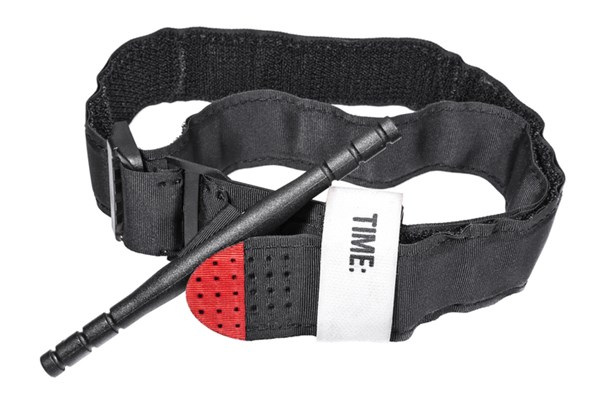The other day, I woke up to start studying for my USMLE examination, only to find I had run out of coffee the day before.
I let out a sigh of only mild inconvenience, and I got in my car and drove to the nearest grocery store - a place I have not previously known to be threatening.
Background
On the afternoon of March 22, 2021, 10 people were tragically killed at a King Soopers grocery store in the city of Boulder, Colorado. I have no personal details of what happened inside of the store, what their injuries were like, or what could have been done to help them in their crucial moments. My heart goes out to the families, friends, and acquaintances of all those affected. As a former paramedic in rural Kentucky, I once received a Stop The Bleed instructor training at a time when school shootings were on the rise. This initiative was started in 2017 by the American College of Surgeons and the ACS Committee on Trauma, in partnership with the Department of Homeland Security. As a second-year medical student who is greatly interested in pursuing emergency medicine, I circle back to my Stop The Bleed training every time I read the news about incidents like these. I think about the crucial minutes between injury sustained and the time first responders arrived. I have grown to understand that these situations can arise just about anywhere. I’m confident that I would know how to tamponade a bleeding wound in the field. And if I needed to, I would. But how can we as a whole community be more prepared? In this day and age, we need to treat it like CPR. The more bystanders who are ready and willing to work, the better.
What does the literature say?
A randomized, controlled educational trial conducted by Goolsby et al. enrolled high school students from 39 states at a national conference and assessed the ability and willingness of high school students to apply a tourniquet prior to being educated on how to recognize the need for one and how to apply it correctly. Three educational modalities were utilized consisting of instructor-led, web-only, and blended education formats. This trial demonstrated that students who participated in hands-on interaction and learning were better able to apply a tourniquet correctly. However, all modalities saw nearly 100 percent success rate in teaching students how to recognize the need for a tourniquet as well as an improved willingness and comfort in applying one, should a situation arise where it would be appropriate to do so.1
An additional pre-post evaluation conducted by Ali et al. through the NYU Winthrop Hospital assessed the effectiveness of the Stop The Bleed program for police officers and security guards of the surrounding areas who participated in the program. The pre- and post-evaluations demonstrated not only an improved comfort level in applying tourniquets, but also a significant improvement in correct tourniquet placement and decreased application time.2 In a situation where someone has sustained a life-threatening injury, time certainly makes a difference.
How can we improve?
Not all training is necessarily created equal. There exist limitations to everything, and there are several factors that come into play. Another pre- and post-evaluation was conducted by Villegas et al. through the Weill Cornell Department of Surgery that reported significant participant improvements following their Stop The Bleed training for both hospital and community members. However, several of the participants noted limitations in the program and believed the training would have been more effective if they were able to perform interventions on more realistic mannequins. It was noted that by properly simulating pulsatile blood flow in the practice care setting, the training would have had a more profound impact on their ability to apply these skills in the field.3 With that in mind, there are variables in the quality of training that individuals are receiving that may actually make a difference if they were to encounter a real-life situation where bleeding control is required.
Concluding thoughts
So where does this leave us? Not only do we have the opportunity to educate students at various levels of education, but hemorrhage control programs such as Stop The Bleed remain a versatile option for responders and providers of all levels. You don’t need to be working on an ambulance or in a hospital to make a difference in a moment where seconds matter. If we can implement a more widespread initiative to teach individuals how to control bleeding in various settings and provide them with the tools and the mindset to recognize the need for it, then we have the potential to make a substantial difference in the community-at-large. There is a tremendous amount of room for the Stop The Bleed initiative to be evaluated and improved upon, however I believe that access to training would improve bystander willingness to act. By correctly applying the skills they learn through hemorrhage control programs such as Stop The Bleed, they may be able save a life that could have otherwise not been saved.
More information
ACEP has combined Stop the Bleed principles with CPR training and other basic bystander skills in an overall training called Until Help Arrives: https://www.acep.org/uha/about-the-course/.
References
- Goolsby C, Rojas LE, Rodzik RH, et al. High-School Students Can Stop the Bleed: A Randomized, Controlled Educational Trial. Academic Pediatrics. 2021; 21(2), 321-328. Accessed March 23, 2021.
- Ali F, Petrone P, Berghorn E, et al. Teaching how to stop the bleed: does it work? A prospective evaluation of tourniquet application in law enforcement officers and private security personnel. European Journal of Trauma & Emergency Surgery. 2021; 47(1), 79-83. Accessed March 23, 2021.
- Villegas CV, Gupta A, Liu S, et al. Stop the Bleed: Effective Training in Need of Improvement. Journal of Surgical Research. 2020; 255, 627-631. Accessed March 23, 2021.



